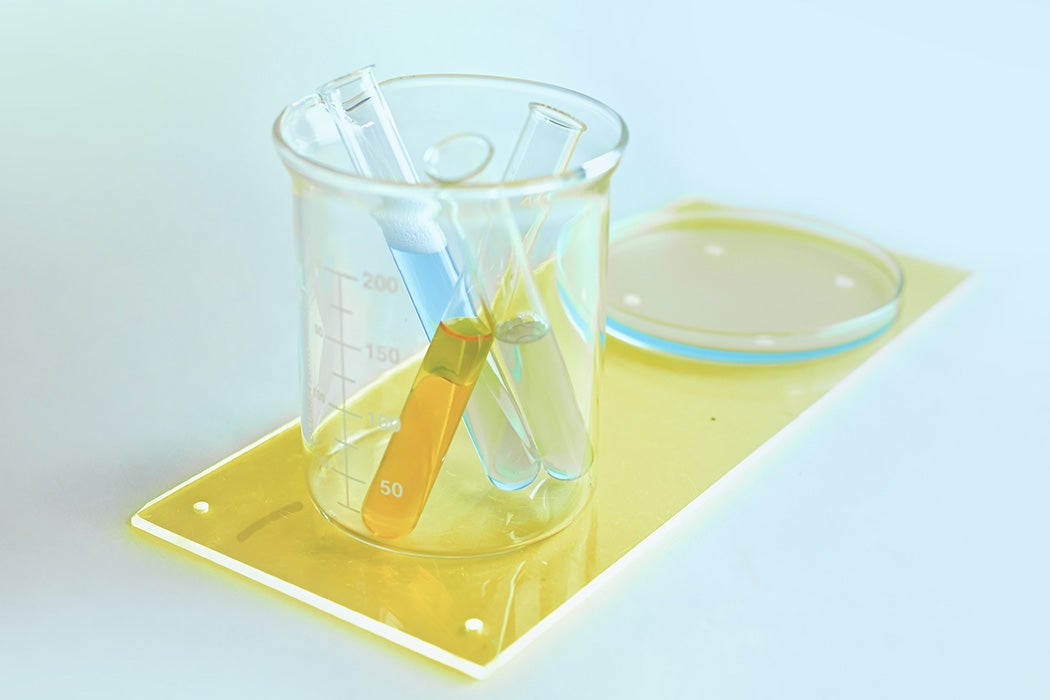So much depends upon the tiny glass vials being used to transport COVID-19 vaccines around the world. The basic process that produces these little bottles is almost 4,000 years old: A powdery pile of silicate sand is heated into a gooey, lava-hot liquid, which is then rolled and shaped into a glass vessel. Throughout history, glass vessels have played a key role in science—especially in the laboratory.
“Hollow glassware is such a ubiquitous presence in modern chemical laboratories that it is easy to imagine that it was always so,” writes science historian Catherine Jackson. But it wasn’t until the nineteenth century that “chemists began using glass in distinctly new ways and…their appropriation of glassblowing skill had profoundly important effects on the emerging discipline of chemistry.”
Before the nineteenth century, chemists and alchemists would stock “an array of flasks and retorts made from a range of materials, including metal and ceramics.” And while these materials worked well enough, they all lacked glass’s clear benefits: chemical inertness, transparency, and high malleability. The material also gave scientists better control over things like mixing, separation, temperature, and pressure. Some early chemists would conduct experiments inside wine and beer glasses.
Then, in the 1820s, expert glassmaker and master chemist Jöns Jacob Berzelius created the first test tube. This heat-resistant, stemless glass vessel “exemplified the neat combination of functionality with economy that made simple chemical glassware so appealing to amateur practitioners,” writes Jackson. The low-cost creation of the iconic tool was only the beginning of the “glassware revolution.”
That’s because, in addition to inventing the test tube, Berzelius was also championing a soon-to-be-fundamental skill: glassblowing. Jackson laments that glassblowing is often regarded “solely as a manipulative craft skill requiring little or no intellectual input.” In reality, esteemed scientists like Berzelius and Michael Faraday repeatedly referred to glassblowing as “an essential component of the chemist’s expertise.”
Weekly Newsletter
Today, scientific glassblowing is considered a valued skill in the field of chemistry, practiced by a small community of master artisans. But two hundred years ago, glassblowing was key to making chemistry accessible. Jackson writes that “all chemists—wealthy or not, professional as well as amateur—learned to perform experiments using small-scale apparatus made almost exclusively from glass tubing by glassblowing.”
In 1859, German scientist Justus Liebig wrote that “in the hands of the chemist and in the flame of a proper lamp, [glass] takes the form and shape of every piece of apparatus required for his experiments.” Though most laboratory glass used today is mass-produced in factories, the hand-crafted origins of chemical glassware marked a seismic shift in the field as a whole, argues Jackson. “The glassware revolution was not merely a change in chemistry’s material culture,” she writes. “It also marked the beginning of new ways of doing research…within chemistry.”
Read about two scientists who used glassblowing to create glass models of sea creatures.







